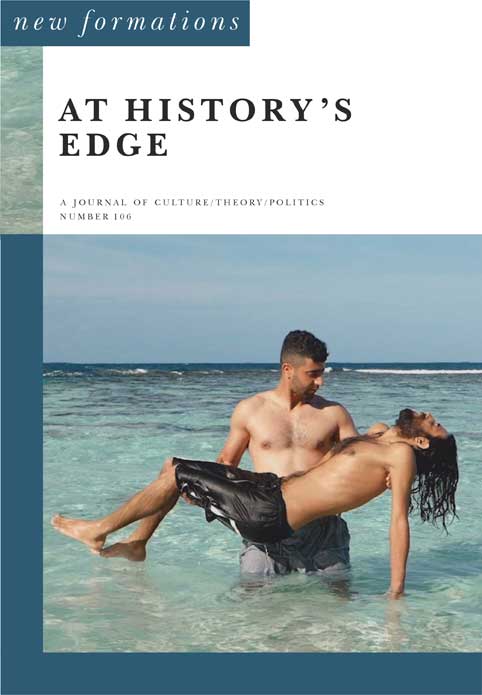
An Australian Politics of Indistinction: Making Refugees Visible
New Formations - ISSN 0950-2378
Volume 2022 Number 106
An Australian Politics of Indistinction: Making Refugees Visible
Jane Lydon pages 100-117
DOI: 10.3898/NEWF:106.06.2022
Abstract
In this article I examine how the competing positions and claims of Australian citizens, First Nations people and refugees are negotiated visually in the global public sphere. Australian perspectives on struggles over citizenship and semi-porous borders must be understood within a history of nation-building, regional relations and the ideology of Whiteness. How does visual culture constitute categories of inclusion and exclusion? Visual strategies that define and contest the place of Indigenous Australians, as well as refugees seeking to come to Australia have been criticised for depicting their subjects as abject victims who lack agency or history, or simply rendering them invisible. Some have been critical of the visual discourse of spectacular violence that has been created and promoted by the Australian government in its pursuit of policies of ‘deterrence’. Seeking to challenge this regime of erasure and de-humanisation, activists have adopted a range of innovative visual tactics, including self-representation by refugees themselves. Tactics of humanisation, such as depicting the love of a mother for her child, draw figures such as asylum seekers into the civil sphere. The extraordinary story of Iranian-Kurdish refugee and journalist Behrouz Boochani traces the emergence of a new humanitarian icon, rising from the invisibility shield of Australia’s official border protection regime. I examine the extent to which these strategies shape debates around migration and refugees, and mediate between the historically powerful principles of Australian exclusion and the legitimate claims of refugees.
To cite this article
Jane Lydon (2022) An Australian Politics of Indistinction: Making Refugees Visible, New Formations, 2022(106), 100-117. https://doi.org/10.3898/NEWF:106.06.2022
